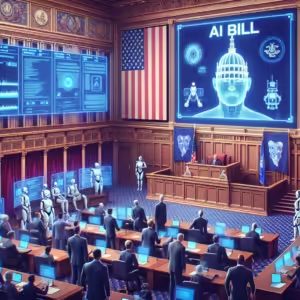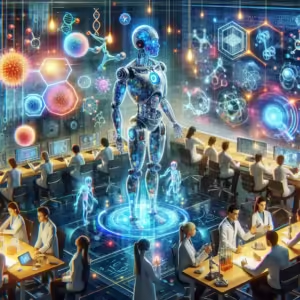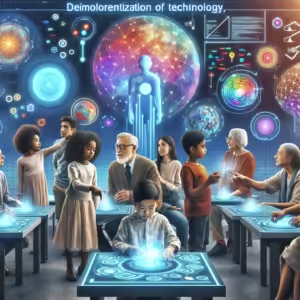As we delve into the evolving landscape of artificial intelligence (AI), one cannot help but ponder the profound implications of a potential detachment between Microsoft and OpenAI. This hypothetical scenario raises questions about the future of AI collaboration, innovation, and accessibility. What if Microsoft decided to let OpenAI go free? The ramifications could reshape the business ecosystem and redefine user access to AI technology.
The Current State of Microsoft and OpenAI
To understand the potential future, we must first examine the existing relationship between Microsoft and OpenAI. Since their partnership began in 2019, Microsoft has invested heavily in OpenAI, integrating its technologies into Azure, its cloud computing platform. This collaboration has yielded groundbreaking tools, including:
- ChatGPT: A conversational AI model that has gained immense popularity.
- DALL-E: An image generation model that allows users to create stunning visuals from text descriptions.
- Codex: A model that writes programming code, enhancing developer productivity.
These innovations highlight how intertwined Microsoft and OpenAI have become, creating a powerful synergy that has propelled advancements in AI. But what happens if this partnership dissolves?
Potential Implications of Microsoft and OpenAI Parting Ways
1. Influence on Innovation
If Microsoft were to cut ties with OpenAI, several potential consequences could emerge concerning innovation:
- Increased Competition: Other tech companies may seize the opportunity to develop their AI models, leading to a surge in diverse AI applications.
- Shift in Focus: OpenAI might prioritize its independent projects, possibly exploring advanced AI systems that diverge from Microsoft’s vision.
- New Collaborations: OpenAI could forge new partnerships, potentially collaborating with companies that offer different resources and platforms, further expanding the AI ecosystem.
2. The Democratization of AI
An immediate question arises: would severing ties benefit wider society? A split could lead to the democratization of AI by:
- Increased Accessibility: OpenAI could open its technologies to the public, making advanced AI tools available to a broader audience without corporate restrictions.
- Open Source Models: Observing a trend toward open-source technologies, OpenAI might release its models for community use, fostering collaboration and innovation.
- Emergency Innovations: Developers and researchers could leverage these models for unexpected and creative solutions in various fields, from healthcare to environmental science.
3. Economic Ripple Effects
Blueprinting the economic landscape in the absence of the Microsoft-OpenAI alliance reveals several critical factors:
- Startup Ecosystem Disruption: With AI tools more accessible, new startups could emerge rapidly, but established players might feel threatened, leading to consolidation of market power in unforeseen ways.
- Changes in Investment Strategies: Investors may shift their focus from traditional tech stocks to burgeoning AI-based startups, reshaping funding dynamics.
- Job Market Transformation: While new job opportunities may arise, the need for AI literacy will grow, prompting shifts in education and training sectors.
Challenges of an AI-Independent OpenAI
Despite the optimistic possibilities surrounding a free OpenAI, it is essential to consider substantial challenges that could emerge from such a scenario:
- Resource Limitations: Without Microsoft’s robust funding and infrastructure, OpenAI may struggle to maintain its pace of innovation.
- Ethical Concerns: Ensuring the responsible development and deployment of AI technologies could become more complicated, with fewer established checks and balances in place.
- Market Uncertainty: A split could generate uncertainty in the tech market, impacting stock prices and investor confidence in both companies.
The Role of Consumers in Shaping the Future
In a world where Microsoft and OpenAI operate independently, consumers will play a pivotal role in shaping the future landscape of AI. Their preferences will dictate innovation directions and market competition. Here are some factors that may influence consumer behavior:
- Demand for Accessibility: If OpenAI provides free or low-cost access to advanced AI tools, consumer demand could skyrocket, leading to rapid adoption rates.
- Quality vs. Availability: Consumers may have to weigh the quality of AI solutions against their availability. This tipping point will shape the brand loyalty dynamics in the AI space.
- Awareness of Ethics: As consumers become more conscious of ethical AI use, they may favor companies prioritizing responsible development practices.
Conclusion: A Future to Consider
Imagining a future without the ties between Microsoft and OpenAI opens a myriad of possible scenarios, from enhanced innovation and democratization of AI to new challenges and market shifts. While the potential for a transformed AI landscape is enticing, it is essential to remain cognizant of the challenges that may accompany such a change.
Ultimately, whether it heralds a new era of collaboration or competition within the tech industry, the future of AI will undoubtedly be shaped by the decisions made today. As the industry continues to evolve, one thing remains certain: the world of AI holds infinite possibilities, both with and without the longstanding alliance between Microsoft and OpenAI.







